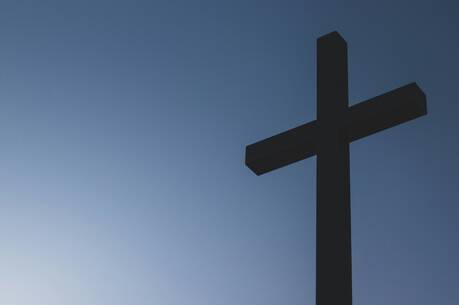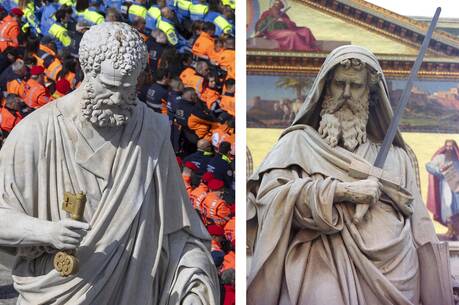Lifegiving Bread
I first met Mr. Smith while bringing Communion to bedridden residents of a local nursing home. Like some other residents, he had an advanced case of dementia. As I knocked on his door and half entered, I introduced myself, letting him know I was from the parish. He responded, “#&%* off!” As I was backing out of the room, he asked, “Well, what did you want?” “I came to bring Communion,” I said. “Oh,” he replied, “that’s different. Come on in.” He became instantly devout. After we prayed the Lord’s Prayer together, I gave him Communion, which he took with great reverence. He then slowly blessed himself. It was beautiful. Then he said, “Now #&%* off!”
This experience has been a continual inspiration for me. It was obvious to me that Mr. Smith was not just going through the motions of a past habit of piety. He was very much present and engaged in the holiness of taking Communion. I dare say he was more lucid then than at any other time of the day. Even though Mr. Smith’s mind was deeply compromised by his brain disease, receiving Communion drew him to the holy presence of God and engaged his own spiritual dignity.
Today’s second reading from the Letter to the Hebrews is a complex layering of symbols that have everything to do with engaging the holiness of God. Having recalled the Old Testament understanding of sanctuary ritual, the author aligns that priestly activity to Christ, the high priest of the new, perfected covenant. The short version of the reading begins, “When Christ came as high priest of the good things that have come to be, passing through the more perfect tabernacle...he entered once for all into the sanctuary.” Later, he will identify this sanctuary as heaven itself.
Here we are not asked to imagine that heaven is a spiritualized temple. Rather, we are invited to consider the universe as a temple, with heaven representing the Holy of Holies, where the Ark of the Covenant once resided. The physical temple’s Holy of Holies was so sacred that the high priest entered it only on the Day of Atonement (Yom Kippur). He had a rope tied to him, just in case he encountered God directly and died. In that case the other priests could drag him out without having to enter themselves. Hebrews assures us that this sacred space was merely a physical copy of the real sanctuary in heaven, where one is guaranteed a direct encounter with God. By his sacrifice Christ penetrated this heavenly sanctuary. “For this reason he is the mediator of the new covenant.”
In my mind, the created universe exists on two levels: a physical and a spiritual. These levels penetrate each other utterly. This way of framing things helps me understand why miracles need not violate nature, since they are governed by the spiritual aspect of nature, which cannot be explained by physical laws. Imagining the universe as a temple and heaven as the Holy of Holies is spiritually rich. It helps me see how holy the universe really is. Would that in every decision we make about the created world, we could be cognizant of its holy wondrousness. I would treat people differently if I recognized that we all live under the same sacred canopy.
Most of all, this image helps me to understand how Christ has united heaven and earth. Heaven is not earth and earth is assuredly no heaven, but in Christ they are now intrinsically related; they are part of the same temple. In Christ there is nothing profane that is not also holy, nothing temporal that is not also eternal.
I think Mr. Smith intuitively knew this. From the depths of the human condition, the eternal announced itself. And in taking Communion he entered the Holy of Holies with Christ. He took viaticum the day before he died. So with angels to carry him into paradise, he also had with him the Bread of Life, food for the journey—a journey that carries its glorious fulfillment with it.
This article also appeared in print, under the headline “Lifegiving Bread,” in the June 4, 2012, issue.







